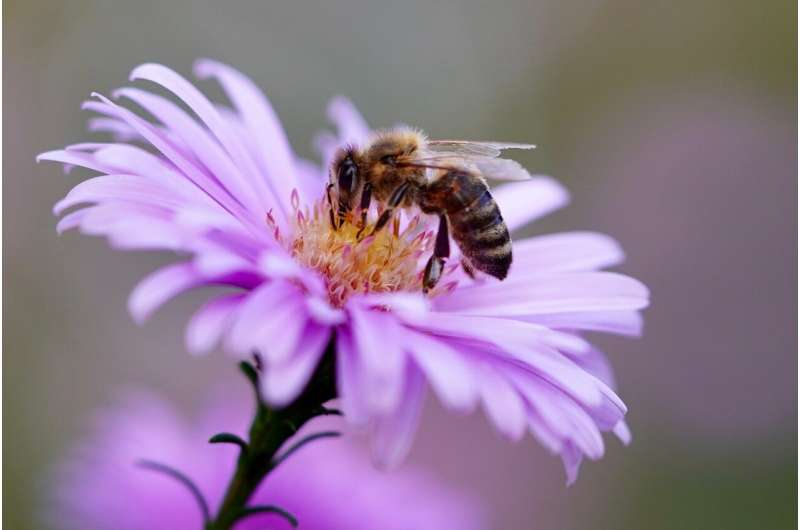Ten-year dataset yields vital clues for supporting Ireland’s precious pollinators

Ecologists from Trinity College Dublin have unearthed vital clues for how we can best support Ireland’s precious pollinators after interrogating a ten-year dataset containing information from 119 sites across the country.
In broad terms, the results confirm the importance of plant (and thus flower) diversity for supporting a smorgasbord of pollinating species, and while they underline the invaluable role of bumblebees, they also shine a light on the importance of other species—with hoverflies in particular more abundant as flower-visitors than may have been expected.
The dataset houses detailed plant-pollinator interaction data from sites around Ireland, across habitat types such as cultivated and built land; coastlands; semi-natural and marshy grasslands; hedgerows; and woodlands and scrub.
It has grown and grown over the past decade thanks to the work of Trinity’s Professor Jane Stout and her collaborators, with much work coming from graduate students supported by the Environmental Protection Agency, Irish Reseacrh Council, Trinity and EU sources.
The six key takeaways of the research, recently published in the journal Ecology and Evolution, are:
- More flowers = more insect pollinators, regardless of habitat
- Flies are undervalued in their contributions; half of all flower visitor species were hoverflies and these species account for over 33% of all visits
- Abundant, widespread flower types like bramble, white clover, knapweeds and creeping buttercups are visited by lots of insects, but rare plants are important for rare pollinators
- Semi-natural grasslands are especially important; they had the most pollinator species and greatest number of visits, and the communities were most “distinct,” which means they were different from other sites, and contained the most rare species
- Bumblebees are a core component of Ireland’s pollinating fauna
- Intensely managed habitats (urban, crops and silage/dairy) have poor pollinator diversity, despite abundant ornamental plants in urban sites
The researchers behind the work—led by Professor Stout and Laura Russo, now a professor in ecology and evolution at the University of Tennessee Knoxville—hope these takeaways can be used to direct conservation and land management practices in key areas.
Jane Stout, Vice President for Biodiversity & Climate Action Sustainability, and Professor in Botany at Trinity, said, “One of the most important conclusions from this work is that Irish semi-natural grasslands are essential for pollinator conservation. This is because they support the most species, including the rarer species that aren’t found in more highly managed habitat types, and a higher proportion of threatened bee species. They have lower proportions of non-native plant species too, so are also important for native plant conservation.
“Given that most of Ireland is covered in highly managed habitats, such as agricultural crops, silage and dairy pastures, and urban and suburban gardens and flower beds, it is concerning that these habitats were supporting relatively fewer insect species. Urban habitats had more non-native plant species, which isn’t surprising considering most garden plants are not native to Ireland. But this increase in non-native plant species didn’t correspond to an increase in insect diversity. Thus getting native plant diversity back into our highly managed habitats is important to support pollinator communities, and represents one action that thousands of us can take fairly easily to help boost pollinator numbers.”
This work feeds in to the All-Ireland Pollinator Plan, which aims to provide food, shelter and safety for bees and other pollinators in Ireland, so that they can survive and thrive.
More information:
Laura Russo et al, Conserving diversity in Irish plant–pollinator networks, Ecology and Evolution (2022). DOI: 10.1002/ece3.9347
For more information about the larger project, visit the All-Ireland Pollinator Plan website.
Citation:
Ten-year dataset yields vital clues for supporting Ireland’s precious pollinators (2022, November 2)
retrieved 2 November 2022
from https://phys.org/news/2022-11-ten-year-dataset-yields-vital-clues.html
This document is subject to copyright. Apart from any fair dealing for the purpose of private study or research, no
part may be reproduced without the written permission. The content is provided for information purposes only.
For all the latest Science News Click Here
For the latest news and updates, follow us on Google News.

